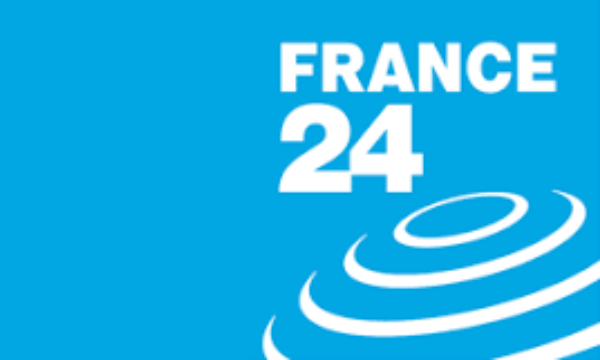
Good morning, Broadsheet readers! Iranian activists call on social media companies to ban the country's leaders, IMF's managing director sees a risk of financial instability, and Pfizer chief corporate affairs officer Sally Susman remembers the moment she figured out how to "break through" to consumers during COVID in an excerpt from her new book.
- Breaking through. I am not a yogi, but I do enjoy an occasional class, if only to be in sweaty proximity to the lithe and enlightened. Though an infrequent practitioner, I was saddened when, in late February 2020, my yoga studio closed due to COVID fears. On Sunday, March 1, I was on my living room floor, cross-legged on my mat, streaming a class on my smartphone. Instead of meditating, I was more engaged with the real world. My house was quiet, but my head was noisy.
I had been unnerved by a call early that morning. “The streets of Beijing are empty,” Pfizer’s senior leader in our China division reported when we talked during the early hours. “I’m so grateful you called to check on me,” he continued. I heard desperation in the voice of a man I knew to be steady and stoic. The virus was recently identified as something I’d never heard of: SARS-CoV-2. It had just begun to demonstrate to scientists and researchers its ability to spread quickly from person to person at an alarming rate.

Something was in the air aside from the chill, and I could feel it. I saw it when I stopped in at my bodega. The shelves were thinned out. No toilet paper. Bread and milk—the survival talismans of any crisis—were depleted. I thought about buying cigarettes, though I had quit 25 years ago. I felt the fight-or-flight impulse kick in. But where would I go?
Home. I had to get home. But, with my wife away and my young adult daughter locked down in California, my house would be dark. I left the store empty-handed and scared.
Mostly, I was contemplating the mission my company was pursuing. My boss, Pfizer’s chairman and CEO Albert Bourla, had just made a powerful pledge: to find a vaccine. I believed we would find the vaccine. I had to. The alternative was unthinkable.
This mission—to develop and distribute a vaccine in record time—presented me with a rare opportunity to be part of a moonshot that could potentially save millions of lives. For me it presented the added possibility to repair the abysmal reputation of Big Pharma. This was urgent, not only for business reasons but because it was essential that we earn the trust of a skeptical public if we were to be recognized as legitimate contributors to the war against a virus that was not yet well understood.
Imagine the compounded tragedy if we developed a safe and effective vaccine that no one had the confidence to take. We had to build back much of the trust the industry had lost. This was a communications challenge. And one I had prepared for my entire career. It wasn’t only the vaccine science that would be groundbreaking, but the intense engagement with the public as well. It is thanks to Albert’s singular vision and sturdy backbone that Pfizer found a highly effective and safe mRNA vaccine.
This moment did not lend itself to the tried-and-true crisis communications exercises. I couldn’t rely on the basic playbook that every entry-level professional has been taught—the campaign plan that begins with an ambitious goal, a smart strategy of reliable and noncontroversial techniques along with an accompanying set of detailed supporting tactics. The COVID crisis was undermining public confidence, and consumers were already wary of pharmaceutical company communications. Too many advertisements showing happy people running through grass fields while a voiceover gives a long list of potential side effects had eroded our credibility. People wouldn’t accept a hackneyed approach when it came to injecting a new vaccine into their bodies and those of their loved ones. At least not without asking a lot of complex and valid questions.

We needed something more powerful and less predictable if we were to succeed in creating confidence and trust in our work at a time of such justifiably profound anxiety. My communications, government relations, patient advocacy, and public affairs planning needed ambitions of equal magnitude to those our company was setting: a first-time vaccine technology to save the world. Nothing less would do, but there were few if any lessons from the past to serve as our guide.
That is the moment it came to me.
Between deep ujjayi breaths in yoga class, the idea of what was required of me was clear. “My intention is to break through,” I said. To cut through the noise and fear, we needed to shatter everything the public believed about Big Pharma. We had to challenge every assumption and respond respectfully to every criticism. We had to rethink the very essence of our public profile. We had to reintroduce ourselves.
Reprinted by permission of Harvard Business Review Press. Adapted from Breaking Through: Communicating to Open Minds, Move Hearts, and Change the World by Sally Susman. Copyright 2023 Sally Susman. All rights reserved.
The Broadsheet is Fortune's newsletter for and about the world's most powerful women. Today's edition was curated by Kinsey Crowley. Subscribe here.







